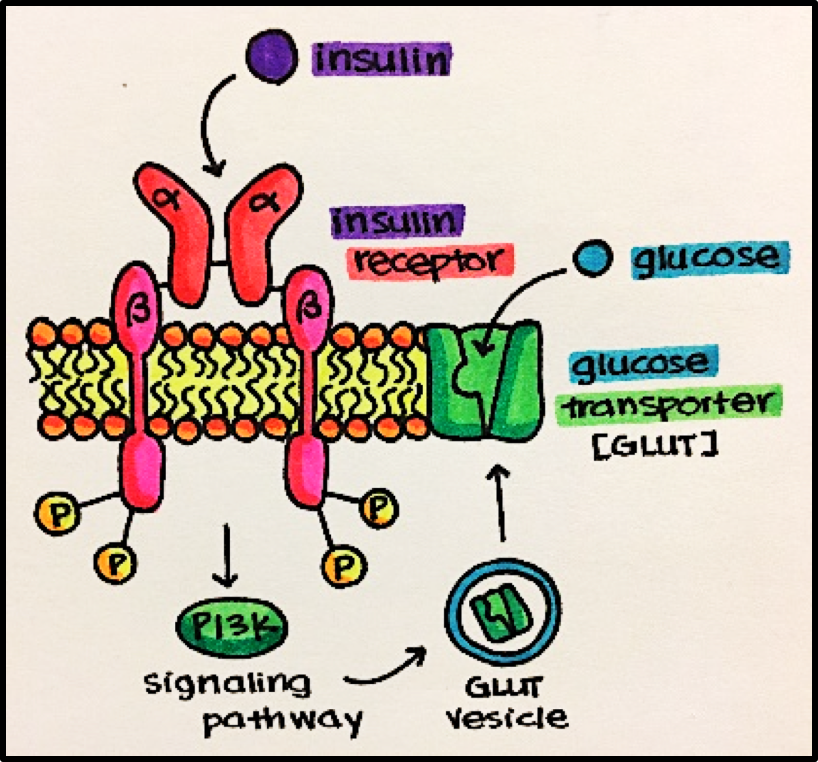Main Body
12. Introduction to Signal Transduction
Signal Transduction • transmission of molecular signals from outside the cell into the cell via cell-surface receptors. Signal transmission is caused either by:
- a cascade of events or biochemical changes within the cell
- o receptors that initiate biochemical changes accomplish this either by intrinsic enzymatic activities (within the receptor itself) or by activating intracellular messenger molecules
- modification of the cell membrane potential initiated by the movement of ions into or out of the cell
Why is this important? Identifying the cellular events that take place upon receptor activation is necessary for designing pharmacological agents that potentiate (increase) or diminish (decrease) signaling. For example, certain signaling pathways become overly active in cancerous cells. Suppression of these exaggerated signals may be one way to reduce cell proliferation in cancer.
Purpose of Signal Transduction
- Signal amplification • increasing a signal so that minimal receptor occupation by small amounts of neurotransmitters in the synapse produces significant cellular responses.
- Signal dampening • decreasing an abnormally high signal to maintain physiological homeostasis. An example is how receptors on the presynaptic nerve ending respond to high levels of a neurotransmitter in the synapse by decreasing further neurotransmitter release (auto receptors)
- Feedback inhibition:
Output of signal transduction is used as a signal to decrease the signaling process itself (which will usually limit the production of intracellular messengers)
- Feedback inhibition:
Types of Signal Transduction
- Autocrine
- Paracrine
- Endocrine
Autocrine • cell secretes chemical messenger or hormone that will then activate receptors on that same cell.
Paracrine • cell secretes chemical messenger or hormone that will then activate cell-surface receptors on a cell nearby.
- A good example is synaptic transmission, which is how neurons communicate through neurotransmitters.
Endocrine • cell secretes chemical messenger or hormone that needs to be transported via the blood stream to reach a distant target cell.
- Neuroendocrine cells receive neuronal input (neurotransmitters released by nerve cells or neurosecretory cells) and, as a consequence of this input, release message molecules (hormones) to the bloodstream.
Example • insulin is synthesized and secreted by pancreatic beta cells, released into the blood and transported to cells all over the body. Insulin then stimulates its receptors on these cells to initiate a cascade of events leading to expression of glucose transporters to allow cells to take glucose in for energy utilization.
Signal Transduction Pathways are not always linear.
- Convergence • when signals from a variety of unrelated receptors can converge and activate common effectors.
- Divergence • when a signal from a single receptor can activate multiple effectors.
- Crosstalk • when different signals increase or decrease the production of other signals
Effector • The eventual target of signaling. For example, the heart is an effector of norepinephrine released from nerve terminals.
Types of Signal Transducing Messengers
- First Messengers •agonists(i.e. hormones, neurotransmitters, pharmacological agonists)
- Second Messengers • molecules that transmit signals received at receptors (i.e., cAMP, cGMP, DNA binding, ions)
- Third Messengers • (i.e., ions, protein kinases)
Types of Receptors
- Carriers (Transporters)
- Signal Transduction Receptors
- Enzyme-linked
- G-protein-coupled
- Ligand-gated channels
- Intracellular
- Enzymes
Receptors Responsible for Signal Transduction
There are 4 Classes of Signal Transducing Receptors:
1. Enzyme-Linked Receptors (Receptor Kinases) • have intrinsic enzymatic activity or are associated with an intracellular enzyme
2. GPCRs (G-Protein-Coupled Receptors) • couple to GTP binding proteins (G-proteins) inside the cell to activate them. Active G proteins modulate the activity of various ion channels and enzymes.
3. Ligand-Gated Ion Channels • allow specific ions to flow into or out of the cell in response to binding of a chemical messenger
4. Intracellular Receptors (Cytoplasmic & Nuclear Receptors) • activation of these receptors located within a cell results in directly altered gene transcription






